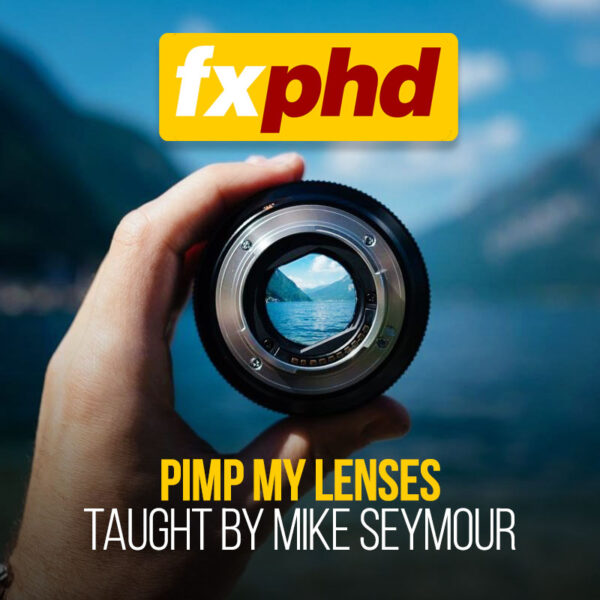fxphd – Pimp My Lenses – Taught by Mike Seymour
Pimp My Lenses
- DURATION: 6 hours 3 minutes
Following on from our highly successful lighting DOP course, this course looks at lenses, how to measure them, use them, trick them and understand how to get the best out of them. Matt Duclos (of Duclos Lenses) and Mike Seymour cover a huge variety of lenses from a single pin hole camera, to new top of the line professional anamorphic lenses. Along the way they cover a huge array of lens info, camera tech, and look at what we jokingly refer to as “what it takes to pimp my lenses”.
Matt Duclos is one of the most experienced lens experts in the world, like his father before him, he modifies lenses, tests and develops new lenses at the Duclos Lens Workshop in LA. Much of this course will be shot in LA, and at the offices of Matt Duclos with photographic examples from around the world. With each lesson we will aim to not only explain the lens but show shooting examples and connect the real world lenses with their digital equivalents.
course syllabus
Pin hole lenses to fundamental pro lens design – Starting with a room sized Camera Obscura and working to high end Professional lenses Mike and Matt cover what sort of lens is right for what style of work. The most simple lens is no lens, we start with a pin hole camera of an entire room, (one room, one pin and a lot of ducktape) and also explore DSLR naked – lens free photography (one DLSR, a lens cap and a laser). From this most basic camera setup right through to Cooke Prime lenses this first class will explain the fundamentals. Lens design (mechanical and optical)
Price bracketing: Picking the right tool for the job – There is no point pretending we all have an infinite budget, but how do you weigh up when it is worth spending the extra money and when a simplier solution will work just as well? We explore lens mechanical design, heritage, and do a comparison between brands and models. This is an invaluable look at what you are actually paying for – from someone who breaks open lenses and knows exactly what is inside.
Focus, Gearing and Follow focus – If there is one central point to all lenses it is the ability to focus them and achieve sharp results. We explore focus systems from automatic to manual. Most professional lenses for film are fully manual, we also explore gearing gearing and lenses follow focus systems, including new controllers that try and bridge the gap between the advantages of manual and the speed of automatic.
Measuring and testing a lens – How do you know if a lens is any good? Is there anything you should do to test a lens? How lenses are checked at Duclos Lenses. Mike explains how aperture works and where the nodal point of a lens is.
Zooms: Lens stabilizing, why it can fail. This is everything you ever wanted to know about zoom lenses. How they work, what is happening to f stop and depth of field with doublers, lens breathing, optical tricks and we show when and where stabilizing zoom lenses fail. Most professionals shoot with Prime lenses why is that? Can a zoom compete and if not where would you notice the difference?
Anamorphics both on a budget and when you have money to spare – One of the most exciting trends of the last 18 months has been the move to shooting anamorphicly. With Arri now supporting this across the new Alexa product line and the release of new Anamorphic lens, we explore how they work, how to shoot with them for creative effect and how to control the problems with Anamorphics that so many people actually seek such as flares, artifacts, glare and ghosting, shim and flare ups. We do this at the very high end with the newest lenses on the market and also on a budget. We’ll show you how to make your own anamorphic lenses – at home!
Odd lenses… The big, the odd and the wonderful – There are so many specialist lenses and unusual solutions. Sometimes these odd lenses can produce a unique look that will elevate a music video or solve a specialist problem – and sometimes they are just plain fun to shoot with! We explore mirror Lens – Shift and tilt, Fish eye… and even 0.7 fstop lenses.
Using unusual lenses to create unusual looks in camera.
IR and filters: Polluting the image – While lenses are self contained they often times have filters. While some of the importance of filters has changed to post production image processing, filters remain a valuable tool. We explore IR class Neutral density, ND, filters including how IR pollution works. Finally we explore filters in front and behind the lens.
A summary of considerations when choosing lenses for production and personal use and what is currently available on the market.






